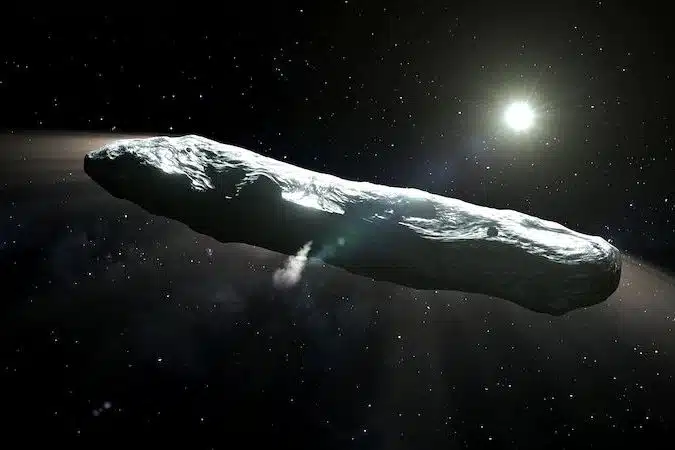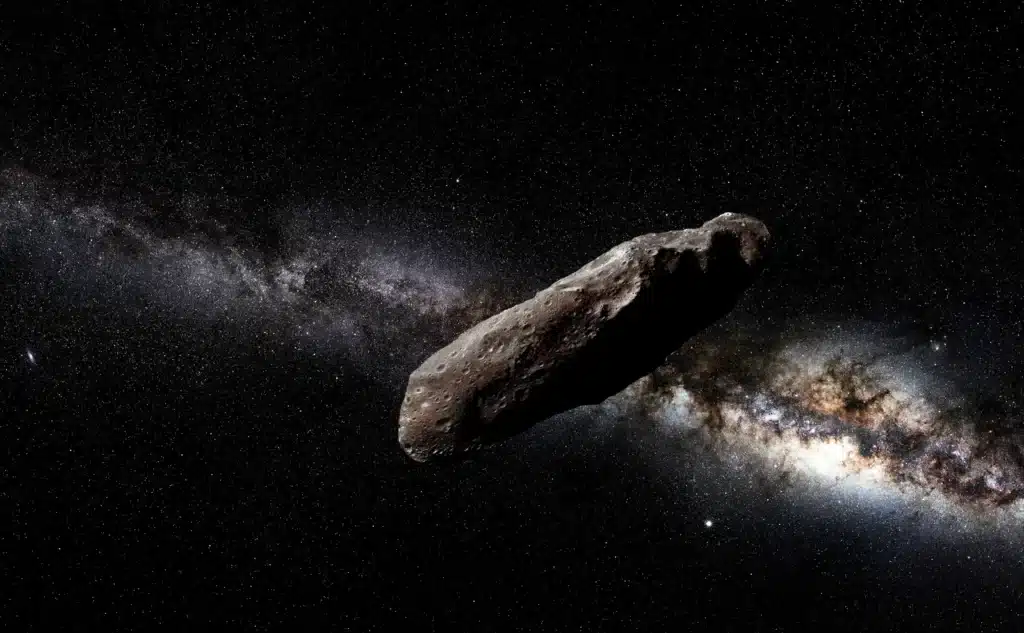In October 2017, astronomers spotted something unlike anything they had ever seen before. A mysterious, cigar-shaped object was detected hurtling through our solar system at incredible speed. Named ʻOumuamua—a Hawaiian word meaning “scout” or “messenger from afar arriving first”—this interstellar visitor immediately sparked intense debate. Was it simply a natural fragment from another star system, or could it possibly be an alien probe sent to study us?
This cosmic mystery has divided the scientific community and captured the imagination of millions. Let’s dive deep into what we know, what we don’t, and why ʻOumuamua remains one of the most intriguing astronomical discoveries of the 21st century.
The Discovery of ʻOumuamua
ʻOumuamua was first detected on October 19, 2017 by astronomers using the Pan-STARRS1 telescope in Hawaii. Unlike comets and asteroids that originate within our solar system, ʻOumuamua’s hyperbolic trajectory revealed it was an interstellar traveler. It entered our solar system from outside, passed close to the Sun, and then continued outward at speeds too fast to be bound by the Sun’s gravity.
This made it the first confirmed interstellar object ever observed in our solar system. Scientists realized this was a rare chance to study a visitor from another star system.
Shape and Speed – The First Mysteries
Initial observations suggested that ʻOumuamua was long and cigar-shaped, roughly 800 meters long and 80 meters wide. No asteroid or comet in our solar system had been seen with such extreme proportions. To add to the mystery, the object spun end-over-end every 7 to 8 hours, making its brightness fluctuate dramatically.
Even more puzzling was its speed. As ʻOumuamua left the inner solar system, it appeared to accelerate slightly—faster than expected from gravity alone. Normally, such acceleration is caused by outgassing (as with comets releasing gas and dust when heated by the Sun). Yet telescopes detected no visible tail or cometary activity, raising more questions.

Alien Probe Hypothesis
Because of these unusual features, some scientists, most notably Harvard astronomer Avi Loeb, suggested that ʻOumuamua might not be a natural rock at all. Loeb argued it could be a light sail or probe built by an alien civilization, using sunlight for propulsion.
This radical idea gained massive attention in the media. Could ʻOumuamua really be a piece of advanced technology, intentionally sent to explore star systems like ours?
Supporters of this theory point to:
- Its unusual shape and rotation.
- Lack of cometary activity despite acceleration.
- Its highly reflective, shiny surface in some observations.
However, most astronomers remain cautious, noting that extraordinary claims require extraordinary evidence.
The Natural Explanations
On the other side of the debate, many scientists argue that ʻOumuamua is most likely a natural object. Several possible explanations include:
- Hydrogen Iceberg – Some researchers suggest it could be a frozen chunk of molecular hydrogen that sublimated invisibly when heated, causing the acceleration.
- Nitrogen Ice Shard – Another theory is that it’s a fragment of a nitrogen-rich exoplanet, similar to Pluto, knocked into space by a cosmic collision.
- Exotic Comet – A more unusual type of comet with outgassing too faint for our instruments to detect.
Though none of these explanations is perfect, they remain more widely accepted than the alien probe hypothesis.

Why ʻOumuamua Still Matters
Regardless of its true nature, ʻOumuamua opened a new chapter in astronomy. It showed us that interstellar objects can and do pass through our solar system. In fact, scientists estimate millions of such objects may be traveling between stars at any given time.
ʻOumuamua’s brief visit has motivated new projects, including telescopes designed to detect interstellar visitors earlier, giving us more time to study them. The discovery also sparked interest in potential future missions that could chase down such objects for close-up exploration.
Conclusion
ʻOumuamua remains one of the greatest cosmic puzzles of our time. Whether it was a bizarre natural fragment or a probe from an alien civilization, it challenged our understanding of the universe and reminded us how much we still have to learn.
As humanity continues to scan the skies, we may one day uncover definitive answers. Until then, ʻOumuamua will continue to fuel both scientific inquiry and the human imagination.

